Despite its venerable age, the event turned out to be bright and interesting, and traditionally attracted a large number of companies, journalists and ordinary visitors – residents and guests of Berlin like to come to IFA with their whole families, so there are always a lot of people at the exhibition (as a journalist, I don’t really like this) .

A distinctive feature of IFA is the wide variety of new products. Here you can find anything from chargers and cases for smartphones to flying electric vehicles. The most difficult thing is not to miss something really interesting among the mass of mediocre devices. Here I’ll tell you in more detail about the most interesting and unusual electronics that I noticed at the IFA 2024 stands.
⇡#A laptop with a built-in gamepad, the fastest monitor and other gaming innovations from Acer
Acer marked itself with several interesting new products at IFA this year. The most unusual can rightfully be considered the DualPlay conceptual gaming laptop, which is equipped with a built-in wireless gamepad. When folded, the gamepad is located in a recess in the lower half of the laptop with the back side up, acting as a trackpad. The controller is held in this cavity using an electromagnetic lock that opens with the press of a button. At the same time, a pair of 5-watt speakers extend from the laptop body, providing rich sound for better immersion in the gaming world.
The game controller offers a pair of joysticks, a D-pad, a set of ABXY control buttons, and a few more additional buttons – a fairly standard set for a modern gaming controller. I note that the controller has one very useful feature – it can be divided into two joysticks, as is the case with the Joy-Con on the Nintendo Switch, for playing together, for example in fighting games.
Of course, this controller does not have the same ergonomics as gamepads for Xbox or PlayStation – still, the form factor imposes its limitations. But overall, at first glance, it is quite convenient. In addition, gamers will definitely appreciate the ability to switch from playing on a keyboard to playing with a gamepad at any time, allowing them to instantly adapt to different genres and styles.
Unfortunately, DualPlay is just a concept for now, and it is unknown whether this or a similar laptop will hit the market. Acer is not yet ready to share its plans. But the company is definitely worth praising for its development – it looks really innovative and interesting.
Acer also showed off the fastest gaming monitor in the world at IFA 2024. The Nitro XV240 F6 became the world’s first monitor with a 600 Hz refresh rate – the previous record was 540 Hz. Of course, the picture on such a display is very smooth, but objectively, I was unable to notice the difference with the 540-Hz monitor standing next to it. Perhaps professional esports players and enthusiasts will immediately see more footage, but for amateurs the advantage of the new product is not obvious.
But a key drawback immediately catches your eye – the Nitro XV240 F6 is built on a TN matrix with Full HD resolution (1920 × 1080 pixels). And while this resolution is quite acceptable for a 24-inch diagonal, shortcomings in color rendition and color distortion are immediately noticeable when looking at the display at an angle.
But Acer also has something to offer those who want a higher-quality picture combined with a high refresh rate, and also on a larger diagonal – the company presented the Nitro XV270 F5 and Nitro XV270U F5 monitors on IPS panels at IFA. The first has Full HD resolution and a refresh rate of 520 Hz, while the second combines WQHD (2560 × 1440 pixels) with a refresh rate of 500 Hz.
Among other new Acer products, I would like to note the world’s first desktop gaming computer on the next generation Intel processor – Arrow Lake-S. These chips should debut this fall, but Intel hasn’t officially unveiled them yet. However, this did not stop Acer from showing the Predator Orion 7000 system on such a processor, even without revealing its detailed characteristics.
In addition, Acer showed off its first portable gaming console, the Nitro Blaze 7. It seems that after the success of Steam Deck, every gaming computer manufacturer decided that they should have a mobile console. Inside the device there is a completely standard set: a Ryzen mobile processor, a fast SSD with a capacity of up to 2 TB and a 144-Hz screen.

And on the eve of IFA 2024, Intel introduced a new generation of mobile processors – Lunar Lake. And it was expected that there would be many laptops on the new chips at the exhibition. But most manufacturers chose not to demonstrate new mobile computers to the general public. However, I managed to find such a system at the Acer stand – Swift 14 AI.
⇡#Honor Laptop with Camera
Honor has been a headliner at IFA for the second year in a row. This time, the Chinese manufacturer presented the global version of the world’s thinnest folding smartphone Magic V3, a very thin and light laptop MagicBook Air 14, a powerful and durable MagicPad 2 tablet, as well as a Watch 5 smart watch, suspiciously reminiscent of the Apple Watch.
And, perhaps, the most interesting new product listed was the laptop (and not a smartphone, as one might think) MagicBook Air 14. Its unique feature was a removable webcam. Honor engineers tried to make the laptop as light and compact as possible, and among other things, they did their best to reduce the size of the frame around the display. As a result, there was no room left for a webcam, so it was decided to make it removable.
When the camera is not in use, it is stored in a special tray on the side of the laptop. To remove it, you only need to press lightly – the spring-loaded mechanism will push out a small rectangular module. Afterwards, this module needs to be installed in the usual place above the screen on the laptop lid – the magnetic mount makes the process quick and easy. And the camera is immediately ready for use.
What is important is that you can fix the camera either by pointing it at yourself or in the opposite direction if you need to show something to your interlocutor. This is very convenient and in some situations can be extremely useful. In addition, this implementation of a webcam will clearly appeal to those who are concerned about privacy – being in the case, the camera definitely cannot be used for surveillance – the lens is closed and there is no contact pad.
I personally see two drawbacks to this solution. Firstly, when you remove the camera from the tray, you will most likely leave fingerprints on it, which can ruin the picture. But what’s even worse is that if you forget to remove the camera and put it in the tray, there is a high probability of losing this module. The magnet secures the camera securely, but it is still easy to unhook. Perhaps Honor is just hoping to make a little money by selling webcams to those who lose theirs.
MagicBook Air 14 also stands out for its light weight – only 1 kg, which is not bad for a 14.6-inch laptop. Honor presented two versions of the laptop in Berlin: one based on the previous generation Intel Core Ultra chips, and the other based on the latest Qualcomm Snapdragon X Elite. The latter belong to the Copilot+ PC category. Of course, Honor has endowed the new product with all sorts of functions based on artificial intelligence, such as improving sound quality during online calls or removing unnecessary objects from photos. No laptop can now do without AI.
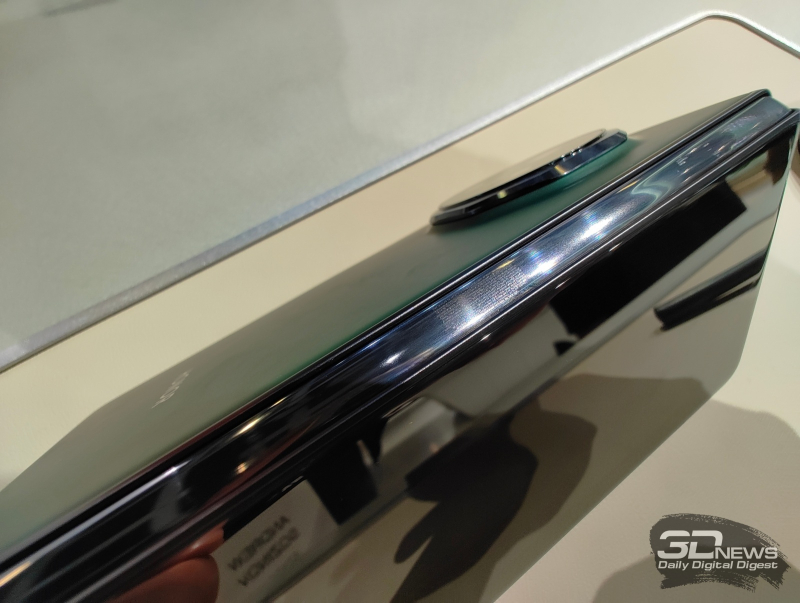
Honor also showed the global version of Magic V3, the world’s thinnest foldable smartphone. The new product for €1999 euros is only 9.2 mm thick when folded, if you do not take into account the strongly protruding rear camera. And at the same time, the new product offers flagship characteristics. Honor is proud to be able to make such a thin smartphone. The company even made fun of its main competitor in the folding smartphone market, Samsung, by engraving a message to Galaxy Z Fold users on the hinge of one of the Magic V3s, in which it sympathized with their choice.
⇡#Lenovo laptop that monitors the user
Lenovo highlighted another unusual laptop at IFA this year. The company showed the Auto Twist AI PC concept, which is equipped with a hinge with an electric motor. Thanks to this, the laptop lid can not only open on command, but also rotate around a vertical axis. For what? To track the user’s movements. It sounds scary, but it actually has practical applications.
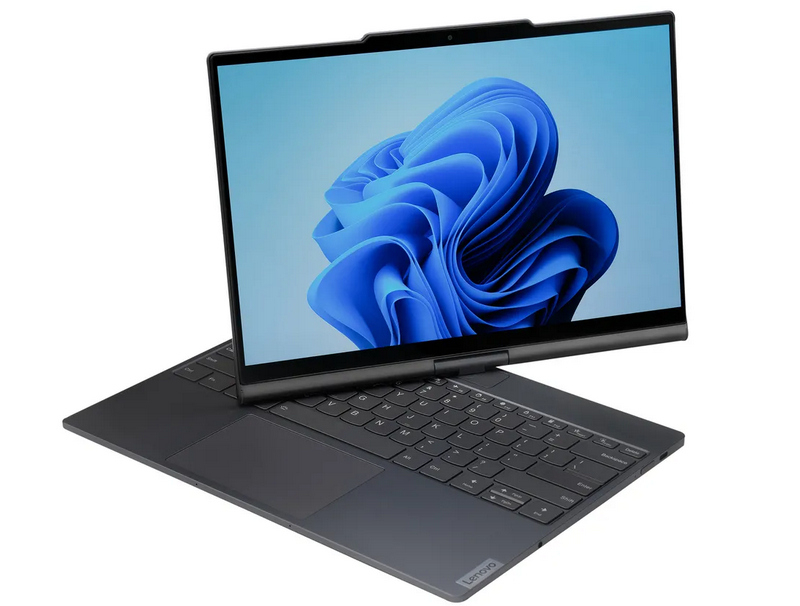
The screen rotates with human movements to provide “optimal display visibility.” This option, as conceived by Lenovo engineers, will be useful for those who often make video calls or presentations, but do not sit still during the process. With Lenovo’s solution, the person always sees the display, and the webcam is always aimed at him, so he remains in the frame. The system does not work very smoothly, and in general it is more of a demonstration of technology, and not something that the broad masses really need. But still very unusual and interesting.
Much more useful, in my opinion, is support for voice control. Auto Twist AI responds to voice commands such as “open laptop” and “close laptop”, “switch to tablet mode”, “switch to laptop mode”. There is also a function to automatically close the lid when the user moves away from the computer. The laptop can also automatically adjust the angle of the lid depending on the user’s posture.
As with the experimental Acer laptop, Lenovo’s new product is still only a concept, and it is far from a fact that the company will release the device to the market.
⇡#Tiny DJI drone with 4K
DJI presented a very compact and lightweight Neo quadcopter at IFA 2024. And in my opinion, this is one of the most interesting quadcopters for amateurs: it is extremely easy to control, inexpensive (€199 in Europe), has a durable body and propeller protection, and at the same time offers very decent technical characteristics. It seems to me that the device is well suited for those who want to shoot unusual content for their social networks, for example, lovers of travel or outdoor activities.
The new product fits in the palm of your hand, from which it can take off and on which it can land—protection on the propellers will prevent the user from getting hurt (unless he deliberately sticks his fingers into the propeller). The drone weighs only 135 grams with battery. A full charge lasts for a maximum of 18 minutes of flight, which in real conditions means 10–15 minutes in the air – it seems that this is not enough, but in fact during this time you can manage to shoot a lot of materials. The maximum flight range is 7 km, and the maximum speed is 16 m/s, which is very good for such a compact drone.
The drone camera has wide-angle optics, a 1/2-inch sensor and supports video recording in 4K at 30 frames per second, as well as Full HD at up to 60 frames per second. There is also electronic image stabilization. Neo can also take 12-megapixel photos. The proprietary application has modes for automatic shooting: for example, a drone can detect a person or object and follow it.
The only drawback, in my opinion, is that the standard package for 199 euros does not have a control panel – you can interact with the drone using a smartphone. But there is a Neo Fly More Combo version for €349, in which the drone comes with a DJI RC-N3 remote control, three batteries with a charging hub and spare parts. By the way, you can charge the battery via USB Type-C.
⇡#Wireless kitchen appliances
Traditionally, a large part of the IFA is devoted to various household appliances, and usually journalists from technology publications simply pass by such stands, because you are unlikely to see anything high-tech and interesting there. But IFA 2024 was an exception – the exhibition showed kettles, toasters, blenders and other kitchen appliances of the future, which work completely wirelessly. It will be enough, for example, to simply place the kettle in the desired place on the countertop and press the power button – the water will soon boil.
The new technology is called Ki, similar to the popular Qi wireless charging standard for smartphones and other gadgets. The basis for both technologies is also the same – electromagnetic induction between two copper coils is used for wireless energy transfer. But if in Qi the energy from the wireless charger is used only to power the battery, then in the case of Ki it directly powers the motors or heating elements of the household appliance. The standard involves transmitting up to 2200 W of energy, which will be enough for toasters, juicers, grills and even deep fryers. In this case, the surface of the energy transmitter hardly heats up.
Of course, to use Ki you will need not only a household appliance that supports the new standard, but also a platform that transmits energy. Devices with Ki communicate with power transmitters via NFC, so that power is only supplied once the device is detected and identified. If the blender or other appliance tips over or becomes dislodged, the power supply will immediately stop.
It is proposed to implement sites for energy transfer in two versions. Firstly, the transmitting coil can be placed directly in the countertop or under it – you can transfer energy through various materials, including quartz, marble and wood up to 3.81 cm thick. The location of the charging pad can be marked with a “+” sign, just like on some wireless chargers for phones, or in some other way – kitchen furniture designers will certainly come up with interesting options.
But there is another option, in my opinion, more interesting and convenient: hobs with built-in Ki energy transmitters will appear on the market. That is, for example, an electric kettle can be heated directly on the stove, and it will not melt – the hob itself will determine whether a Ki-device or a regular frying pan is installed on the stove, and will work accordingly.
The Ki standard has already been supported by many major appliance manufacturers, including Philips, Midea and Miele, and the first devices with its support will hit the market next year.
⇡#Modular TV Kivi
Last year, Kivi introduced a kitchen TV with a smoke sensor at IFA. Later, the manufacturer decided to develop this concept, resulting in smart TVs, the functionality of which can be easily expanded using various external modules. Such “modular” TVs were shown at IFA 2024.
At the moment, four modules are offered: a smoke sensor, a temperature and humidity sensor, RGB backlight and a light projector. They are all installed in different places on the back of the TV. The backlight and projector, unfortunately, are not synchronized with the displayed image, but only serve to create a particular atmosphere in the room.
In the center there is an RGB backlight, a “box” at the bottom left is a smoke sensor, a “box” at the bottom right is a temperature and humidity sensor
Modules can be purchased either immediately complete with the TV, or later separately. Probably, if consumers appreciate this approach, other modules will appear in the future – at a minimum, I would like a backlight that is synchronized with the image on the screen. But, be that as it may, adding external modules to the TV is an interesting solution, which at least sets Kivi apart from its competitors, of which there are more than enough in the entry-level and mid-price segments.
Also last year, I remember Kivi for its small 32-inch TV for children, KidsTV, with a shockproof display and an unusual design in the style of LEGO bricks. This year, the company introduced its enlarged 55-inch version with higher specifications – according to company representatives, the concept of a TV with a design that can be changed using LEGO bricks was liked not only by children, but also by many adults, so it was decided to make a larger model.
⇡#Alef flying car
Even as part of IFA 2024, the young company Alef Aeronautics talked about its upcoming flying electric car Model A and showed its scale model. The car is advertised as the only flying car with the ability to take off and land vertically. The device rises into the air like a regular quadcopter, and then the light frame body rotates 90° around the capsule with passengers, and the machine goes into horizontal flight. In this case, the sides of the car body become the upper and lower wings. This allows you to use battery power much more efficiently. By the way, the power reserve is 322 km on land or 177 km by air.
The frame body is made of carbon fiber, resulting in very low weight. Safety is ensured by a distributed electric propulsion (DEP), a computer flight stabilization system, three- and eight-fold redundancy of all key systems, the ability to land on a glide path and a rescue parachute. There are also systems for safe automatic landing and return to the take-off point.
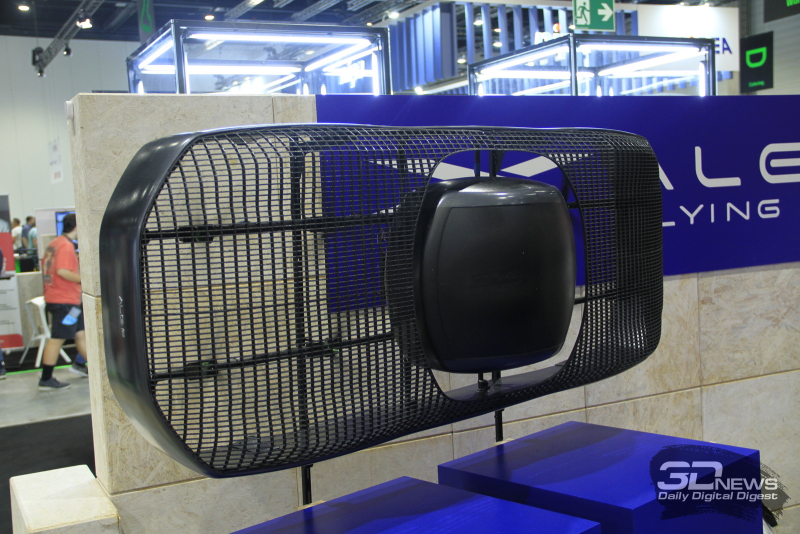
During the exhibition, I was able to talk with one of the founders of the startup, Oleg Petrov. In the conversation, he emphasized that Model A uses advanced batteries with high specific capacity, and in the future the company may switch to solid-state batteries. When asked about the noise level, Petrov said that during the flight the car is very quiet – you won’t hear it from the ground. Noticeable noise is generated only during takeoff and landing, and only for a few seconds.
At the moment, Alef Model A is approved for flights in the USA and several other countries, but with some restrictions (for example, you cannot fly at night). Petrov said that the company is already in full swing testing prototypes of a flying electric car, including manned ones. He also noted that he would like to show the flights of an electric car as part of the exhibition, but the organizers did not allow it. Petrov expects that by the end of next year the company will assemble, test and deliver final models of Model A to its first customers. The company is already accepting pre-orders for flying electric cars, and has already collected several thousand applications. The Alef Model A flying car will cost $300 thousand.
⇡#«Paper smartphones and tablets TCL
TCL has been promoting NxtPaper technology for several years now, which is designed to reduce strain on the user’s eyes, eliminate glare on the screen and allows you to simulate electronic ink displays. At the IFA exhibition, the manufacturer presented its latest incarnations – in the TCL 50 Pro NxtPaper 5G and TCL 50 NxtPaper 5G smartphones, as well as the NxtPaper 14 tablet.
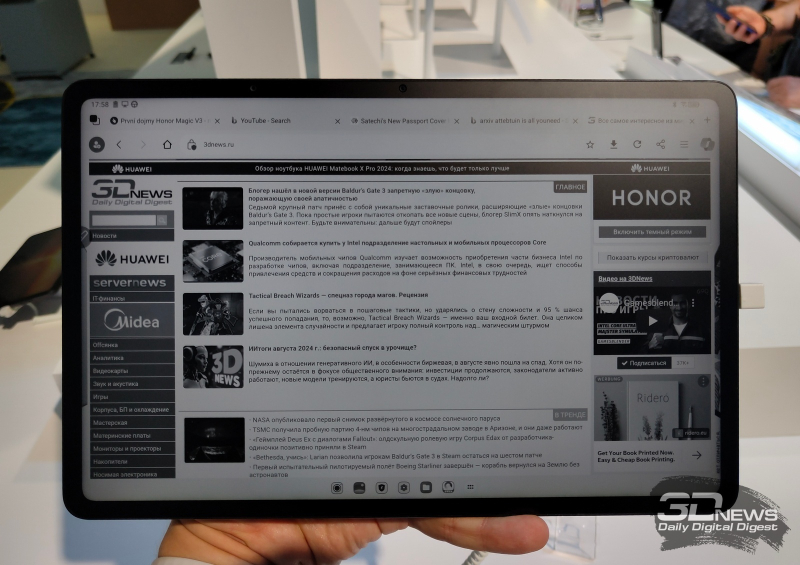
Screens with NxtPaper are designed to compete with E Ink panels. They create less eye strain by eliminating flicker and reducing blue light emission. Compared to e-paper, NxtPaper screens provide higher contrast, and compared to traditional LCD panels, significantly reduced power consumption, thinner thickness and no glare. In addition, the matte surface of the screen feels tactile like paper.
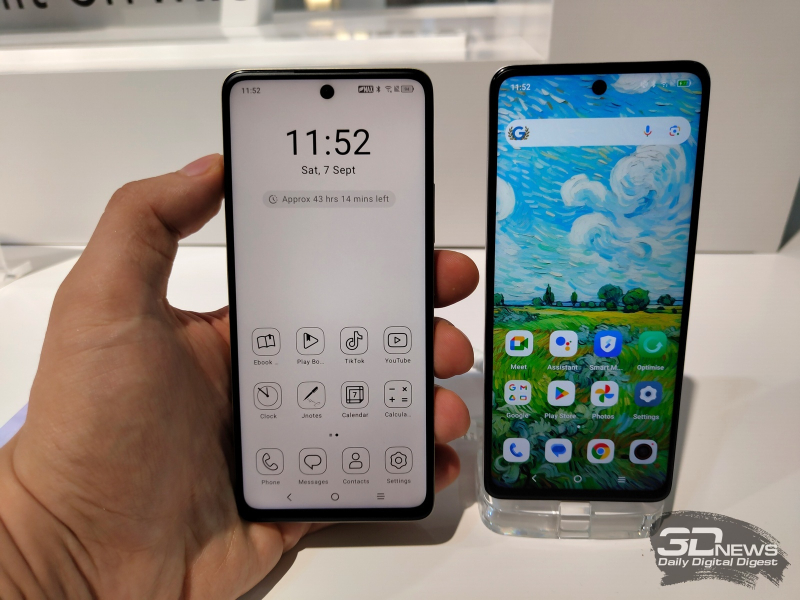
An interesting distinctive feature of the TCL 50 Pro NxtPaper 5G and 50 NxtPaper 5G smartphones, as well as the NxtPaper 14 tablet, is a physical switch on the side panel, which allows you to quickly change display modes on the displays. On the tablet, you can select the standard Regular mode, in which the picture is no different from a regular LCD screen; in Color Paper mode, a display using color electronic ink is simulated; Ink Paper mode simulates a black and white screen using electronic ink. In turn, smartphones offer the following three modes: standard color Color Paper, black and white Ink Paper, as well as “super black and white” Max Ink, which not only provides a completely monochrome image, like an E Ink display, but also turns off notifications so that the user was not distracted while reading.

⇡#Other unusual and strange gadgets
Of course, no technology exhibition is complete without some very unusual and even strange products. For example, at IFA 2024, a Power Hat from EcoFlow was discovered, which is capable of charging gadgets. The hat is made of mesh material, and flexible solar panels are built into its wide brim, which generate electricity.
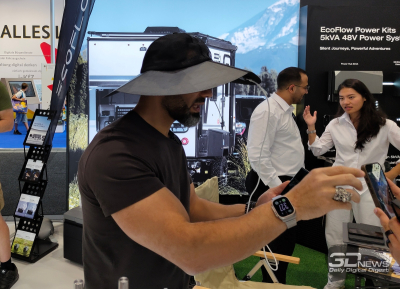

According to the developers, the hat will require about 3-4 hours outdoors to charge the 4000 mAh battery. The maximum power is 12 W, and to connect a smartphone or other gadget, Power Hat has one USB Type-A and one USB Type-C port. It’s safe to take the new product with you to the beach – it meets the IP65 dust and moisture protection class. The accessory turned out to be quite heavy and therefore not very convenient, in my opinion. The Power Hat was pre-ordered for $79 and will retail for $129.
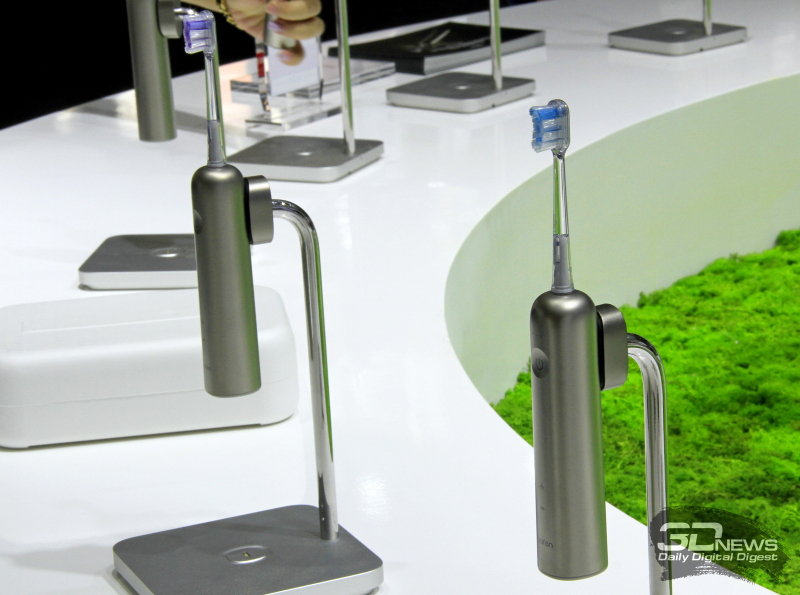
Laifen showed the world’s first titanium toothbrush – Wave Titanium Electric Toothbrush. Why make an electric toothbrush out of titanium? According to the manufacturer, this emphasizes the premium status of the product, and also ensures high quality, reliability and durability of the device. The device is capable of 66,000 vibrations per minute, and also supports wideband vibrations with an angle of 60 ° for deep cleaning. The unique new item costs $160.
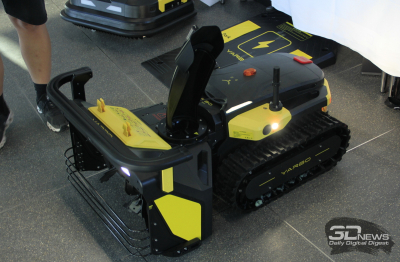

Yarbo has introduced a garden robot that will help with mowing lawns, removing fallen leaves and clearing snow from paths. He does this with the help of replaceable attachments. In the future, other modules are promised, for example, a seed seeder, a plow, etc. The robot is equipped with a removable battery and a powerful electric motor (it can move trailers weighing more than 2 tons), and moves on tracks. The device can work autonomously or be controlled using a wireless controller, including through a VR headset – such a toy for a child over 40 years old. True, for the very rich, a fully equipped Yarbo Core will cost $12,000.
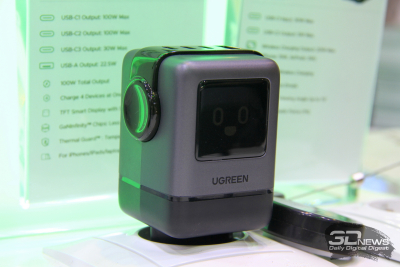
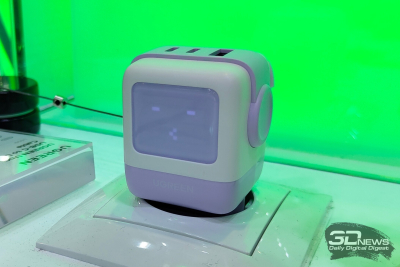
Finally, Ugreen has introduced Uno chargers and power banks that make the user smile when in use. The devices are equipped with pixelated monochrome displays that display a “face,” giving the impression that the smartphone is being charged not by a traditional cube, but by a small robot. Moreover, the expression of the “face” changes depending on the state of charge. It looks very cute!
Overall, IFA 2024 turned out to be very successful. Of course, the former scope that was observed 8-10 years ago is no longer there, but nevertheless, a lot of useful, interesting, entertaining and simply unusual new products were shown in Berlin this year. I hope it will be even better in a year!